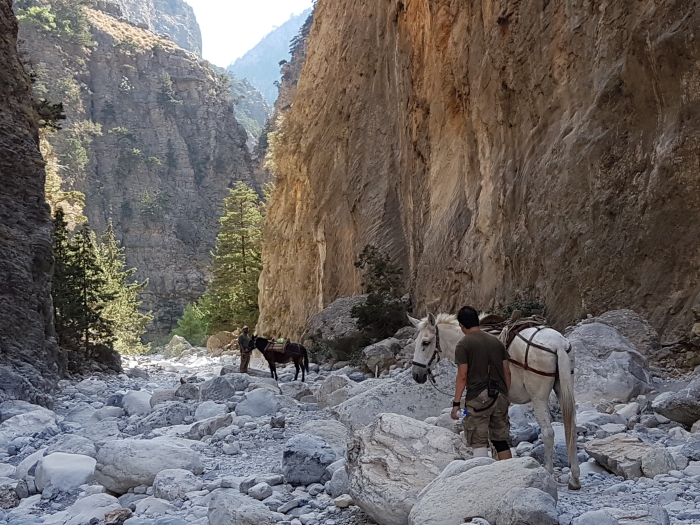From the Mountains to the Sea: Exploring Crete’s Diverse Landscapes
Crete, the largest of the Greek islands, offers a stunning array of landscapes that beckon to be explored. From towering mountains and lush valleys to pristine beaches and rugged coastlines, Crete’s diverse natural beauty makes it a paradise for adventurers and nature enthusiasts. This guide will take you on a journey through the island’s varied terrains, highlighting must-see locations and the unique experiences they offer.
The Majestic Mountains
1. White Mountains (Lefka Ori): The White Mountains, or Lefka Ori, are one of Crete’s most prominent mountain ranges, featuring over 30 peaks that exceed 2,000 meters. The highest peak, Pachnes, stands at 2,453 meters and offers breathtaking views.
- Hiking: The mountains are crisscrossed with hiking trails, including the famous Samaria Gorge, the longest gorge in Europe. This 16-kilometer trek takes you through dramatic landscapes, from narrow passages to verdant forests, ending at the shores of the Libyan Sea.
- Flora and Fauna: The White Mountains are home to unique wildlife, including the endangered Cretan wild goat, or kri-kri, and a variety of endemic plants. Spring is an ideal time to visit, as the mountains are adorned with wildflowers.
2. Mount Ida (Psiloritis): Mount Ida, also known as Psiloritis, is the highest peak in Crete, reaching 2,456 meters. It holds significant mythological importance as the birthplace of Zeus.
- Ascent: Climbing Mount Ida is a rewarding challenge. The E4 European long-distance path includes a route to the summit, where you can enjoy panoramic views of the island.
- Ideon Cave: Explore the Ideon Cave, where according to mythology, Zeus was hidden from his father, Cronus. The cave is a significant archaeological site, with artifacts dating back to the Minoan civilization.
The Verdant Valleys and Gorges
3. Amari Valley: Nestled between Mount Ida and the Kedros range, Amari Valley is a lush, fertile area dotted with traditional villages, olive groves, and vineyards.
- Exploration: Visit charming villages like Thronos and Fourfouras, where you can experience authentic Cretan hospitality. The valley is ideal for leisurely hikes and cycling, offering picturesque scenery and tranquility.
- Cultural Sites: The valley is rich in history, with ancient churches, Venetian bridges, and the Byzantine church of Panagia in Thronos.
4. Kourtaliotiko Gorge: Located near the town of Plakias, Kourtaliotiko Gorge is a dramatic canyon with towering cliffs and a series of waterfalls.
- Hiking and Wildlife: The gorge is a haven for birdwatchers, with species like the griffon vulture often seen soaring above. The trail through the gorge is relatively easy and leads to the beautiful Preveli Beach, known for its palm forest and clear waters.
The Enchanting Coastlines
5. Elafonissi Beach: Elafonissi Beach, located on the southwestern coast, is famous for its pink sand and crystal-clear waters. It’s a protected nature reserve, home to rare plant species and nesting grounds for loggerhead sea turtles.
- Activities: Enjoy swimming, snorkeling, and sunbathing in this idyllic setting. The shallow lagoon is perfect for families with children. Take a walk across the sandbar to the small islet of Elafonissi, which offers more secluded spots.
6. Balos Lagoon: Balos Lagoon, situated on the northwestern tip of Crete, is a breathtaking natural wonder. The lagoon’s shallow, turquoise waters contrast with the deeper blue of the surrounding sea, creating a stunning mosaic of colors.
- Access: Reach Balos by boat from Kissamos or hike from the village of Kaliviani. The hike provides spectacular views of the lagoon and the Gramvousa Peninsula.
- Exploration: Besides swimming and relaxing, explore the nearby islet of Gramvousa, home to a Venetian castle offering panoramic views of the area.
7. Matala Beach: Matala Beach, on the southern coast, is known for its unique sandstone cliffs and ancient caves, which were inhabited during the Neolithic period and later by hippies in the 1960s.
- Historical Sites: Visit the ancient caves carved into the cliffs, which add a historical dimension to the natural beauty of the beach.
- Vibrant Atmosphere: Matala has a lively, bohemian atmosphere with beach bars, restaurants, and music festivals that attract visitors from around the world.
Inland Treasures
8. Lassithi Plateau: The Lassithi Plateau, located in eastern Crete, is a fertile plain surrounded by mountains. It’s known for its windmills, traditional villages, and the Dikteon Cave, another site linked to the mythology of Zeus.
- Cycling and Hiking: The plateau is ideal for cycling and hiking, offering gentle terrain and scenic views. Visit the village of Psychro to explore the Dikteon Cave, where Zeus was said to have been born.
- Agriculture: The area is known for its agricultural produce, including potatoes, apples, and a variety of vegetables. Sample local products at the small markets and tavernas in the villages.
Conclusion
Crete’s diverse landscapes, from its majestic mountains and verdant valleys to its enchanting coastlines and inland treasures, offer endless opportunities for exploration and adventure. Whether you’re hiking through gorges, relaxing on pristine beaches, or discovering historical sites, Crete’s natural beauty and cultural richness provide a unique and unforgettable experience. Embrace the island’s diversity and let its landscapes captivate your senses, offering a journey through one of the Mediterranean’s most enchanting destinations.


